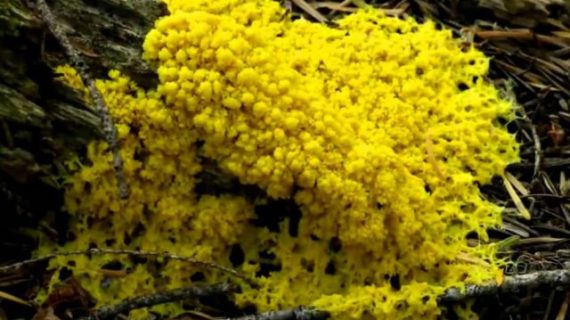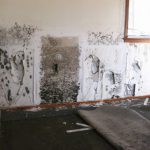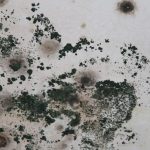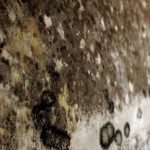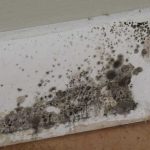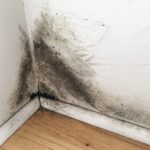There are various types of mold that can grow on various surfaces, and one of them is yellow mold. This kind of mold grows on a lot of things, from a wooden surface to bathroom and even grass clippings.
The yellow mold may not be as common as other types of mold that grow in a building, although this type often grows outside, including in the garden.
Since many people are not familiar with yellow mold, there are various misconceptions about the characteristics and even danger of this mold. Make sure you understand about yellow mold facts, including the right way to remove it.
What is Yellow Mold?
Yellow mold is often referred as “slime mold”, because the colony looks like bright slime when seen at a glance. A large colony of mold often shows actual fungi head growths, which look like tiny mushrooms.
There are several types of mold that can produce a yellow hue, such as Aspergillus, Meruliporia incrassata, and Serpula lacrymans.
Aspergillus is the most common genus of mold that may produce yellow hue. It can grow anywhere, from wooden surfaces, to tiles, and even foods.
Serpula lacrymans is a type of mold that often grows on wood, whether inside a building or on trees. Meanwhile, Meruliporia incrassate is a type of yellow mold that is often quite toxic.
Is Yellow Mold Toxic?
While it looks striking thanks to its bright color, there are still some misconceptions about yellow mold, especially among home owners. Yellow mold is not a super dangerous organism that will poison the inhabitants.
Healthy people with a good immune system may be able to live in a house with yellow mold, but the danger is present for vulnerable groups, such as babies and people with respiratory problems or compromised immune system.
Garden owners often do not know what to do when finding yellow mold on their mulch, lawn, or grass clipping. The truth is: this slime mold is a common organism that lives on plants or organic materials, but do not act as a parasite.
Yellow Mold on Bread
Bread is a type of food that is loved by fungi, especially since it contains a lot of nutrition. Fermented bread types are especially fertile for fungi, making it easy to get moldy.
Aspergillum is one type of mold that often grows on and inside bread. The mold looks like fuzzy layer on top and inside the bread, often with various colors instead of just one.
A really moldy bread usually also releases distinguished musty smell, common among a big colony of mold. Bread is often stored in the dark, warm place, making it more ideal for mold and fungi.
Yellow Mold on Mulch
Mulch, grass clipping, and compost heaps are among the most common locations for yellow mold to grow. Outside, a yellow mold is that slimy substance that you may confuse with animal feces or vomit.
The strange look often makes people worry about what will happen to their plants or gardens.
Yellow mold that you find on mulch, compost heap, or grass is generally harmless. While it looks bad, you can simply rake or scrape it.
The only danger is that if the yellow mold grows uncontrollably, especially in the garden, it can actually smother the plants and reduce nutrition intake they can take.
Yellow Slime Mold in Bathroom
Bathroom, shower, and a wet area in the kitchen are ideal spots for mold to grow, including yellow mold. These rooms are often damp and full of the residue of shampoo, soap, and dirt, which are foods for a lot of bacteria and single-cell organisms that form yellow mold.
Yellow mold often grows on spots such as shower walls or curtain, vent, near the faucets or shower head, under the sink, near the sinkhole, and in the corner of walls or floor.
If you seldom clean your bathroom thoroughly, or does not use cleaning agent with anti mold formula, it will be easy for yellow mold to grow.
Yellow Mold on Walls
Walls often become places for mold to grow, especially in the middle of the ideal situation. High humidity, moisture problem, and lack of fresh air or sunlight are factors that cause yellow mold to grow on walls.
Yellow mold on walls may grow into larger fungi colony, so you need to remove it when the problem is still small. Otherwise, you may need to replace the walls and wallpaper, or even remodel parts of your house to prevent new growth.
Yellow Mold on Wood

Slime yellow mold loves growing on an organic surface, especially wood. If your house structure has woods in hidden places, such as in the basement, ceiling, or foundation, you can experience mold problem after a while.
The yellow mold may start as little specks, but they can grow into a slimy layer that looks disgusting. If you let it grow, the mold will release musty smell and damage the structure.
How to Get Rid of Yellow Slime Mold
Removing yellow mold from any outdoor surfaces, such as grass, mulch, or compost heap is quite easy. You can just take the mold and remove it as far as possible from the vicinity of your garden.
However, if the problem persists, you may want to replace the soil and remove the moldy plants or mulch.
If the mold problem happens inside the house, you can spray the moldy surface with a mix between 1 part of white vinegar and 3 parts of water (you can replace vinegar with hydrogen peroxide or baking soda).
Let it soaks for 10 minutes before scrubbing the surface. However, if the problem happens on more than 10 meters of square area, call professional for better cleaning result.
If the yellow mold grows on bread or other foods, remove those items as soon as possible. Clean the storage or space where the moldy foods are previously stored, so there is no mold growing again.
Do not forget to always pay attention to your food’s expiry date or shelf life.
Yellow slime mold is not a pleasant sight at home. Make sure to deal with the early stage of mold problem as soon as possible, and prevent future yellow mold infestation problem inside or outside your house.
